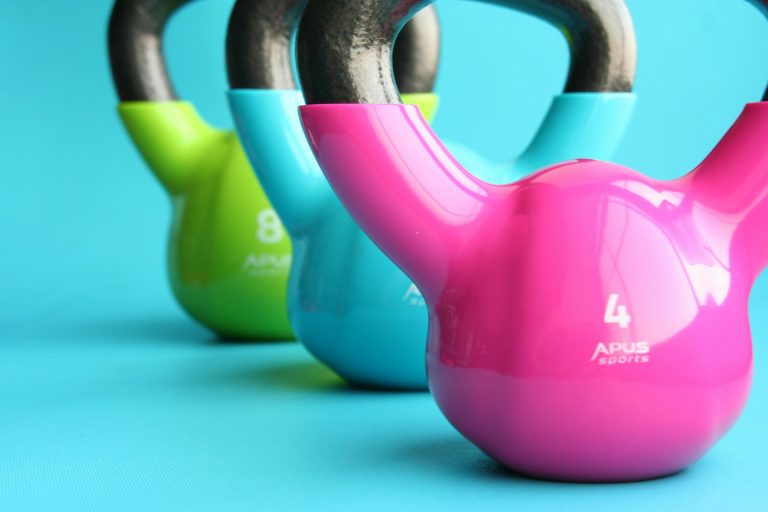
Introduction
Getting started with resistance bands is a simple, effective way to build strength, improve flexibility and enhance overall fitness—no gym required. Perfect for absolute beginners and those returning to exercise, resistance bands are lightweight, affordable and versatile. Whether you’re looking to tone muscles, support joint health or ease into a new routine this guide will help you understand the benefits of resistance bands and how to use them safely and confidently.
If you’re an absolute beginner at strength training and exercise and ready to embrace a stronger, healthier version of yourself resistance bands might just be your perfect starting point. Whether you’re returning to fitness or starting for the first time resistance bands offer a safe, simple and incredibly effective way to build strength, improve balance and boost confidence—right from the comfort of your home.
A 2023 study published in the Journal of Aging and Physical Activity found that resistance band training significantly improves strength and mobility in women over 45. And the best part? You don’t need a gym, a trainer or expensive equipment to get started.
This complete guide is your step-by-step blueprint for using resistance bands to feel stronger, move better and age with confidence.
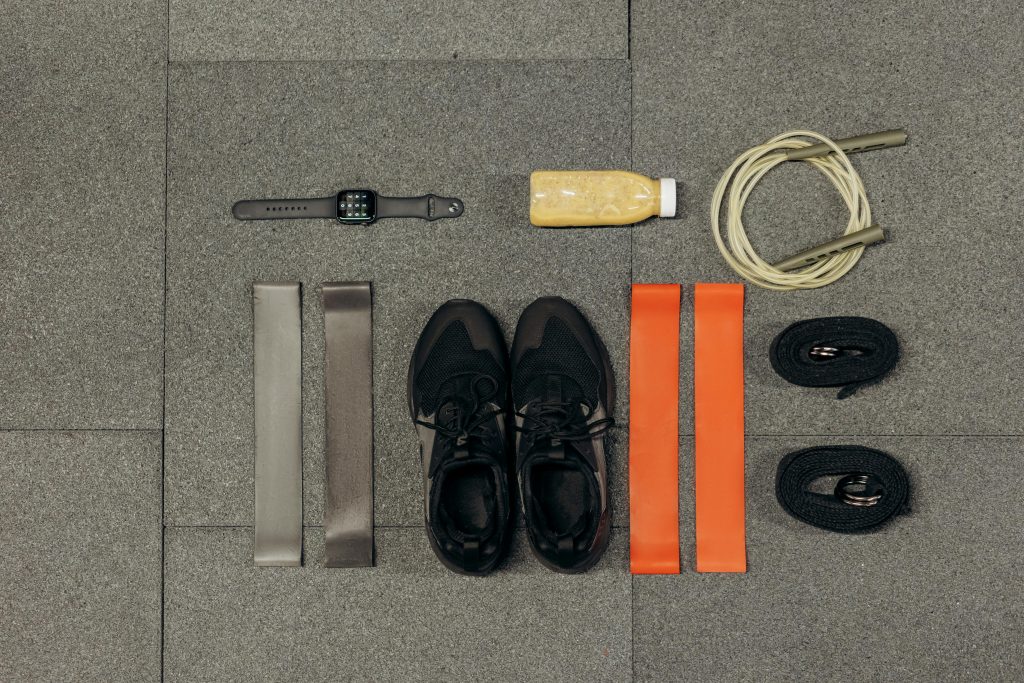
Why Resistance Bands Are Ideal for Absolute Beginners
Versatile
Resistance bands are one of the best tools for anyone just starting a strength training journey. They’re lightweight, affordable and incredibly versatile making them perfect for absolute beginners who want to build strength safely at home or in a gym. Unlike heavy weights or complicated machines resistance bands allow you to control the tension and range of motion which helps reduce the risk of injury—especially for those over 50 or returning after a long break. They’re also great for improving joint stability and flexibility while still providing enough resistance to challenge your muscles.
Easily Adapted
Another reason resistance bands are ideal for beginners is that they can be easily adapted to suit any fitness level. Whether you’re working on bicep curls, squats or seated rows bands come in various resistance levels so you can start light and progress gradually. They’re also gentle on the joints making them a smart choice for those managing arthritis, recovering from injuries or simply easing into strength training. Plus they’re easy to store and travel with so you can stick to your routine wherever you are. For anyone looking to build strength with confidence and control resistance bands offer a safe, effective and user-friendly starting point.
Choosing the Right Resistance Bands
With so many types of resistance bands available it can be a little overwhelming to know which one to start with. But choosing the right resistance bands can make a big difference in the effectiveness and enjoyment of your workouts. Each type serves a unique purpose so it’s helpful to match your band choice with your fitness goals especially if you’re over 50 and looking for a safe and manageable way to build strength and mobility.
Loop Bands
Loop bands are a popular choice for lower-body workouts. These bands are small, circular and great for targeting glutes, thighs and hips. Exercises like squats, glute bridges and lateral walks become more challenging and effective when loop bands are added for resistance. They’re simple to use and perfect for building stability and strength in the legs without putting strain on the joints.
Tube Bands with Handles
Tube bands with handles are ideal for upper-body strength training. These bands mimic the feel of traditional dumbbells and are excellent for exercises like bicep curls, chest presses, rows and shoulder raises. The handles offer a firm grip making them user-friendly and comfortable especially for beginners or anyone with grip issues. They also come in varying resistance levels so you can progress at your own pace.
Figure-8 Bands
If you’re short on space or prefer low-impact movement figure-8 bands are a compact option. These are great for mobility work and gentle resistance training especially for the shoulders and back.
Therapy Bands
Therapy bands—the flat, ribbon-like ones—are often used in rehabilitation settings. They offer light resistance and are ideal for improving flexibility, recovering from injury or easing into a workout routine. They’re especially useful for stretching or physical therapy exercises. No matter your starting point selecting the right resistance band ensures you get the most benefit from your workouts while keeping things safe and manageable.
Beginner Resistance Band Kits
Match the resistance level to your ability. Start light and work up as your strength improves. Look for beginner resistance band kits that come with accessories like handles and anchors. Reputable brands like TheraBand, Fit Simplify, and SPRI offer quality sets for home use.
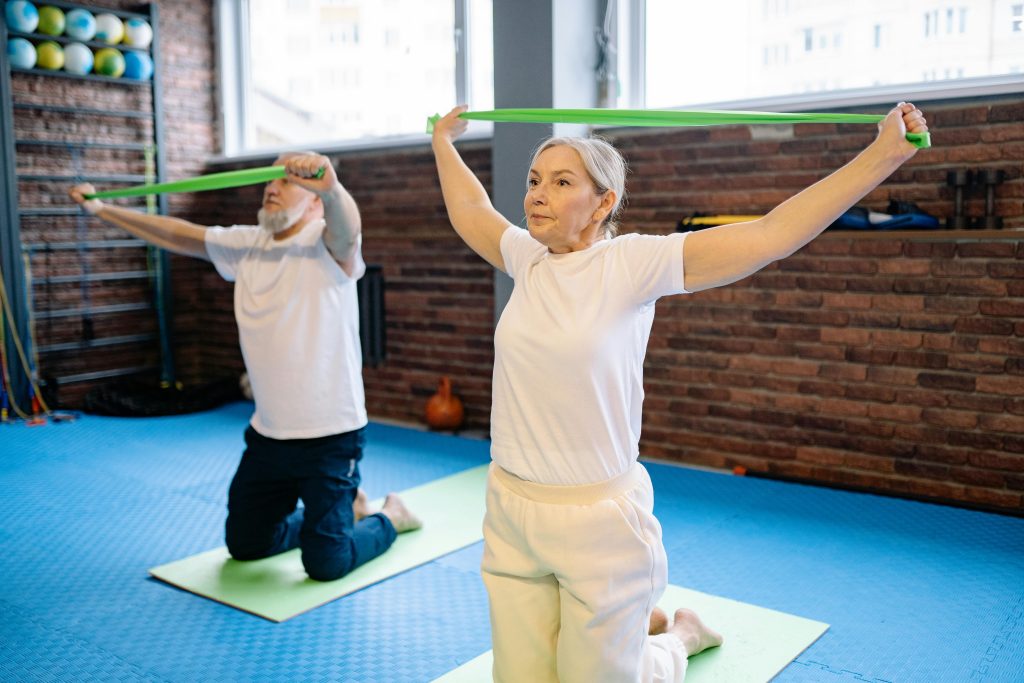
Safety Tips and Setup for Beginners
Getting started with resistance bands can be a smart and low-impact way to build muscle especially for absolute beginners over 50. But safety should always come first—particularly for women who may be managing joint sensitivity, arthritis or even osteoporosis. Using proper setup techniques and body awareness will help you get the most out of your workouts while reducing the risk of strain or injury.
Warm-Up
Before doing any resistance exercises take a few minutes to warm up your muscles. Simple movements like marching in place, shoulder rolls or gentle arm swings help increase blood flow and prepare your body for activity. Once you’re ready to begin make sure to secure your resistance bands properly. Anchoring them under your feet or behind a closed door (with a door anchor, if needed) can prevent sudden slipping or snapping during a movement.
Posture
Maintaining proper posture is key for both safety and effectiveness. Keep your spine neutral—not arched or rounded—engage your core and relax your shoulders. These small adjustments help protect your back and joints while encouraging good form. When you perform each move exhale during the hardest part (like when you pull or push against the band). This stabilizes your core and helps you move with more control.
Smooth Movements
Avoid locking your joints or using jerky motions. Smooth controlled movements are not only safer but also more effective in building strength. Always listen to your body—if something feels off or painful stop and reassess your form. With the right setup and precautions resistance band training can be a safe empowering way to stay strong and active well into your 50s and beyond.
By prioritizing form and control you’ll prevent injury and maximize results from your resistance band workout routine.
Foundational Resistance Band Exercises for Absolute Beginners
Resistance bands are a fantastic way to build strength and improve mobility, especially for absolute beginners. They’re gentle on the joints, easy to use at home and versatile enough to target every major muscle group. For adults over 50 resistance band exercises can help increase functional strength, enhance balance and reduce the risk of injury. By starting with foundational moves for each area of the body beginners can build confidence while safely developing muscle tone and endurance.
Upper Body
For upper body strength banded rows and chest presses are excellent starting points.
A resistance band row works the back and biceps and can be done by anchoring the band under your feet while sitting or standing. Hold the handles or ends of the band, pull back with your elbows close to your sides and slowly release. This mimics the motion of a rowing machine and helps improve posture.
Chest presses performed with the band anchored behind you target the chest and shoulders. These movements build functional strength that supports daily activities like lifting groceries or opening heavy doors.
Lower Body
For the legs and glutes squats and glute bridges with a loop band are ideal beginner exercises.
Place a loop band just above your knees and perform bodyweight squats to activate the thigh and hip muscles while improving stability.
Glute bridges done on the floor with the same band strengthen the hips and lower back—a crucial area for balance and mobility. These exercises are especially helpful for women managing age-related muscle loss or joint sensitivity, as they reduce pressure on the knees and spine while still being effective.
Core
Strengthening the core is essential for balance and back health.
A great beginner core exercise is the seated banded twist. Sit on the floor with legs extended, wrap the band around the feet and hold both ends. Keeping the spine tall gently twist the torso side to side engaging the obliques.
Another simple move is the banded dead bug where you use a light band to create resistance between your hands and feet while lying on your back. These moves promote core engagement and protect the lower back during daily movement.
Full Body
To train the body as a whole banded squats to overhead press combine lower and upper body work in one smooth motion. Start with the band under your feet and hold the ends at shoulder height. Perform a squat then as you stand press the band overhead. This exercise increases the heart rate, builds coordination and trains multiple muscle groups at once. It’s a great functional move for beginners that simulates real-life activities like lifting something off the floor and placing it on a shelf.
Functional Fitness
Starting with these foundational resistance band exercises allows absolute beginners to build strength safely and steadily. With consistency you’ll gain not only muscle tone but also greater confidence in your body’s ability to move and support you through all stages of life.
Focus on quality over quantity and listen to your body. These joint-friendly workouts are perfect for developing toned muscles without high impact.

Creating a Beginner-Friendly Workout Plan
Structure helps build consistency—and consistency drives results. Starting a new fitness routine can feel overwhelming but with a simple and structured plan beginners can ease into strength training safely and effectively. A beginner-friendly workout plan should focus on building a foundation of strength, improving mobility and establishing consistency. For adults over 50 it’s especially important to include rest days and low-impact movements to support joint health and recovery.
Sample 3-Day Routine
A well-balanced beginner routine could follow a three-day-per-week schedule allowing for adequate rest between sessions. For example:
- Day 1 – Upper Body: Focus on resistance band rows, chest presses, bicep curls and shoulder raises. Include light stretching at the end.
- Day 2 – Lower Body: Do banded squats, glute bridges, standing leg lifts and calf raises. Add a short walk or gentle cardio to finish.
- Day 3 – Core and Full Body: Combine seated band twists, banded dead bugs, squats to overhead presses and standing marches. End with a few deep breathing exercises for recovery.
Each session should last 20–30 minutes and include a 5-minute warm-up and cooldown. This schedule builds strength and balance without overloading the body.
Tips
To get the most out of a beginner workout plan start slow and focus on form over speed or intensity. Choose resistance bands that match your current strength level—light to medium tension is usually best for beginners. Keep your movements smooth and controlled and don’t rush through the exercises. It’s helpful to track your workouts using a notebook or app to monitor progress and stay motivated. Most importantly listen to your body. If something feels uncomfortable or causes pain adjust the movement or take a break. A beginner-friendly plan is all about consistency not perfection. With regular effort and a supportive routine you’ll begin to feel stronger more mobile, and more confident in your abilities.
Common Challenges and How to Overcome Them
Starting a new strength training routine especially with resistance bands can be exciting—but it’s not without its hurdles. For adults over 50 who may be managing health concerns or just getting back into a fitness habit common challenges like motivation dips, joint discomfort or lack of confidence can slow progress. The good news is that these setbacks are normal and can be addressed with simple practical solutions.
Staying Consistent
One of the most common obstacles is staying consistent. Life gets busy and some days motivation is hard to find. To overcome this schedule workouts like appointments and keep them short and manageable—just 20 to 30 minutes, three times a week, is enough to see progress. Having a workout buddy or using a tracking app can also help maintain accountability and keep things fun.
Joint Pain or Stiffness
Another frequent challenge is joint pain or stiffness which can make exercise feel intimidating. Resistance bands are gentle on the joints but it’s still important to warm up properly and choose exercises that suit your mobility level. Focus on slow controlled movements and don’t hesitate to modify exercises. If a certain movement causes discomfort try a lighter band or a different angle. And always check with your doctor if you’re unsure about a specific exercise.
Self-Doubt or Fear
Many beginners struggle with self-doubt or fear of doing things wrong. This is completely normal especially if you’re new to fitness. The key is to start small and focus on form rather than speed or intensity. Watching simple tutorial videos, following a beginner-friendly plan and giving yourself permission to learn can go a long way in building confidence. Remember progress isn’t always about lifting heavier—it’s also about feeling stronger, more balanced and more in tune with your body. With patience and persistence you can overcome these common challenges and enjoy the many benefits of strength training at any age.
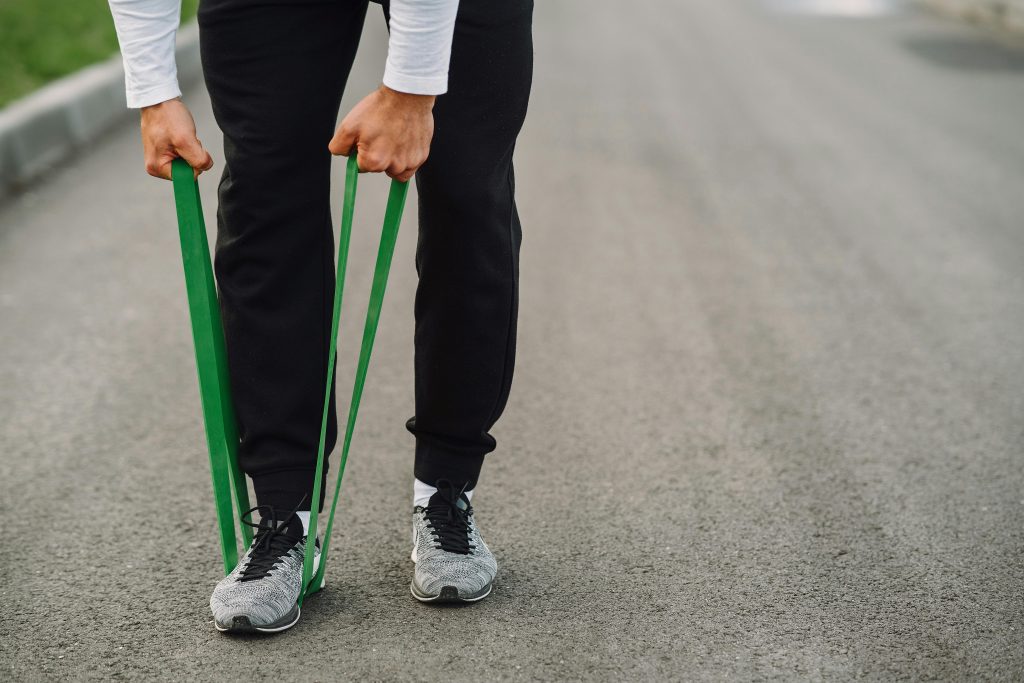
Long-Term Benefits of Resistance Band Training for Absolute Beginners
The benefits of sticking with a resistance band routine go far beyond toned arms or stronger legs. Women over 45 often experience a natural decline in muscle mass and bone density. Resistance bands help fight back—without the wear and tear of heavy weights.
Real Difference
Resistance band training is more than just a beginner-friendly fitness option—it’s a powerful way to build strength, improve mobility and support overall health for the long haul. Especially for adults over 50 resistance bands offer a safe and accessible way to stay active without putting unnecessary stress on the joints. When used consistently the long-term benefits can make a real difference in everyday life and physical well-being.
Muscle Mass
One of the biggest long-term benefits of resistance band training is maintaining muscle mass. As we age we naturally lose muscle which can affect balance, posture and daily function. Resistance bands help preserve and build strength in a controlled way reducing the risk of falls and injuries. Over time this leads to better mobility, more energy and greater independence in day-to-day activities.
Joint Support and Flexibility
Another lasting benefit is joint support and flexibility. Unlike heavy weights that may strain aging joints resistance bands provide tension without impact helping to strengthen muscles around the joints and improve range of motion. This is especially helpful for those managing arthritis or recovering from injury. Regular band workouts can also enhance posture by targeting the back, shoulders and core muscles that support a strong upright frame.
Mental and Emotional Health
Beyond physical health resistance band training also supports mental and emotional well-being. The confidence gained from getting stronger combined with the mood-boosting effects of regular movement can have a big impact over time. It becomes easier to stay consistent when workouts feel approachable and progress is noticeable. Whether you’re working toward specific goals or simply want to feel better in your body resistance band training offers a sustainable low-impact path to lifelong fitness.
Tools & Resources to Support Your Journey
Starting and sticking with a strength training routine—especially one using resistance bands—can feel more manageable when you have the right tools and resources. For beginners and adults over 50 the focus should be on simplicity, safety and support. With a few smart choices you can create a well-rounded setup that helps you stay consistent, motivated and informed as you build strength at your own pace.
Essential Tools
One essential tool is a set of resistance bands in varying tensions. Having light, medium and heavy bands allows you to progress gradually and adjust for different muscle groups. Look for bands that come with handles, door anchors or loop options so you can target both upper and lower body effectively. Pair these with a workout mat to provide a comfortable non-slip surface especially if you’re exercising on hard floors.
Tracking tools
Tracking tools also play a key role in staying on course. Whether you use a simple notebook, a printable workout log or a mobile app like Strong, Fitbod, or Jefit, logging your exercises helps you see your progress over time. Many apps also offer video demonstrations and customizable plans tailored to your fitness level. If you’re a visual learner, watching exercise tutorials on YouTube or streaming beginner fitness classes can be a great way to learn proper form and stay engaged.
Community and Expert Support
Don’t overlook the importance of community and expert support. Online forums, Facebook groups or local senior fitness classes can provide encouragement and accountability. If possible consider checking in with a personal trainer—especially one familiar with strength training for older adults. With the right tools and a little guidance your resistance band workouts can become a rewarding and empowering part of your healthy lifestyle.
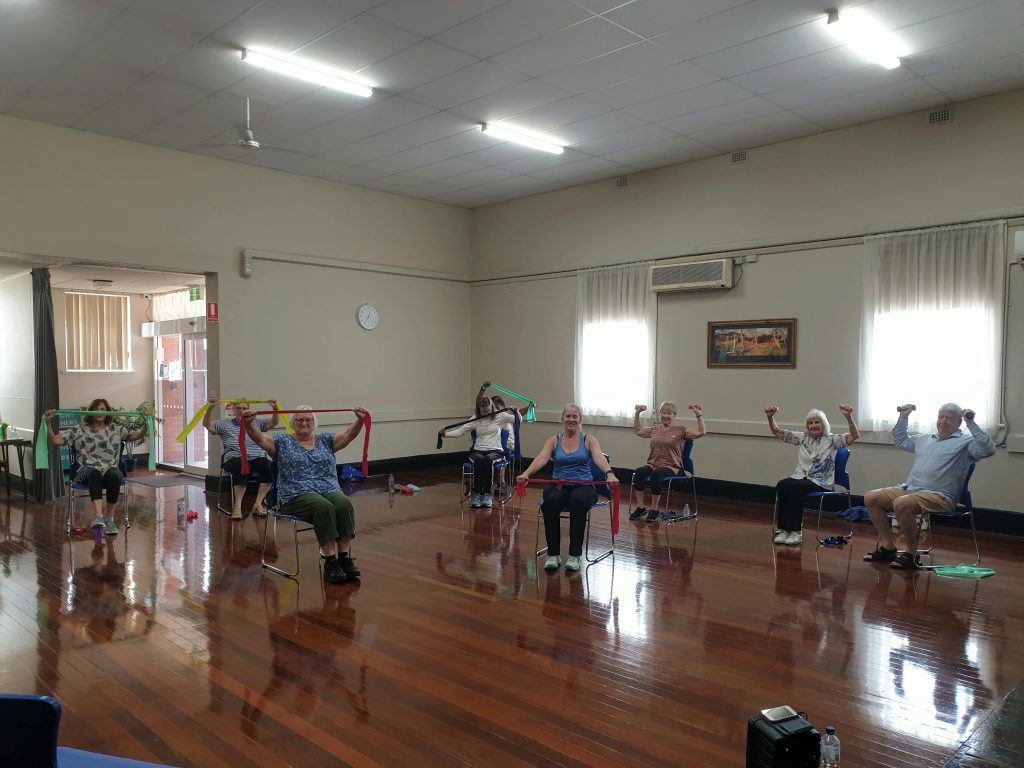
Conclusion
Getting started with resistance bands isn’t just about physical strength—it’s about reclaiming energy, movement and confidence. You don’t need to be young, super fit or join a gym to see results. You just need a set of bands, a little guidance and a commitment to take that first step.
So what’s next? Choose a band. Try a move. Breathe deeply and believe in what’s possible. Because with the right tools, guidance and mindset this chapter of your life can be your strongest yet.




